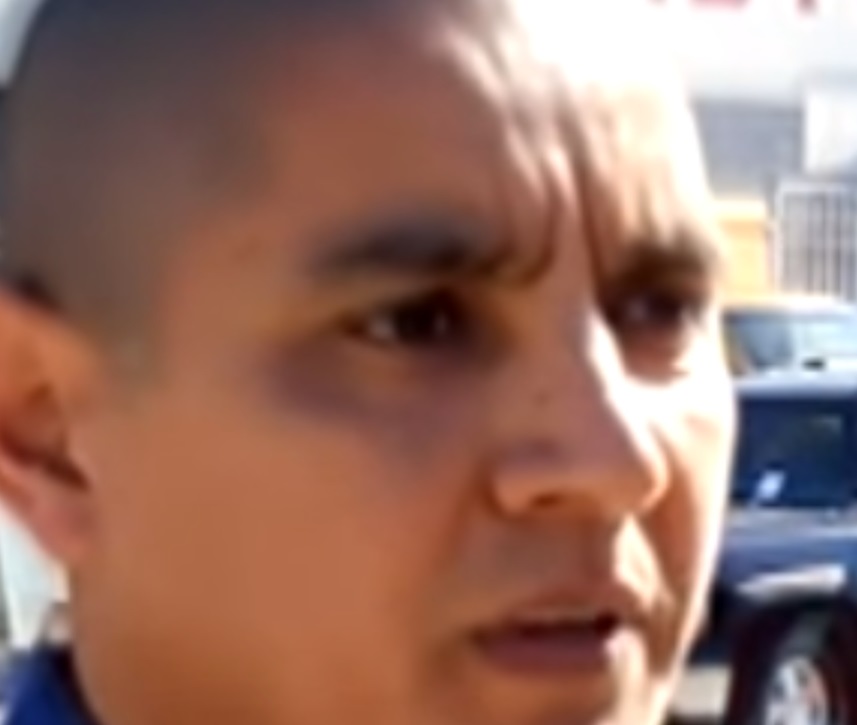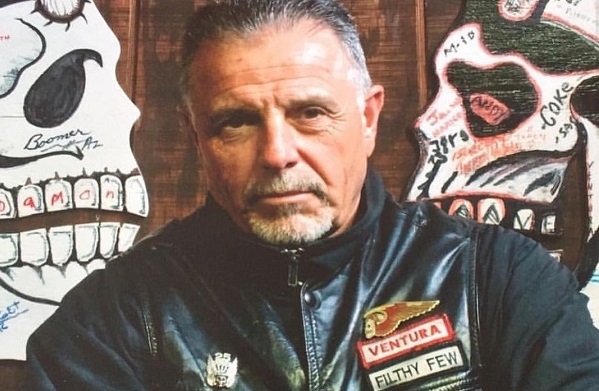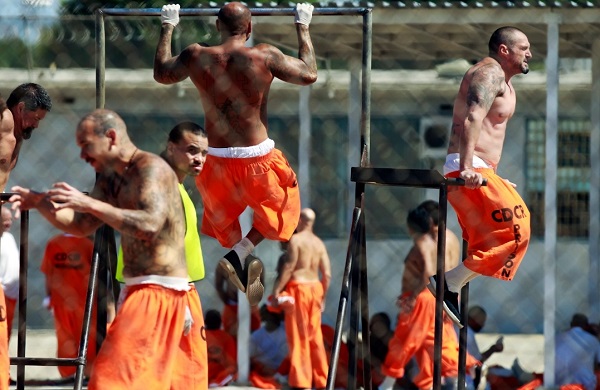By Thom L. Jones for Gangsters Inc.
The noun “organized crime” describes criminal activities that are planned and controlled by powerful groups and carried out on a large scale. This is, according to Oxford Languages, a leading dictionary publisher.
The US government has a somewhat more verbose interpretation in relation to street gangs:
“The United States Congress House Committee on Government Reform provided the following definition for a street gang (2006): “Criminal street gang” means any ongoing organization, association, or group of three or more persons, whether formal or informal, (i) which has as one of its primary objectives or activities the commission of one or more criminal activities; (ii) which has an identifiable name or identifying sign or symbol; and (iii) whose members individually or collectively have engaged in the commission of, attempt to commit, conspiracy to commit, or solicitation of two or more predicate criminal acts, at least one of which is an act of violence, provided such acts were not part of a common act or transaction (p-27).”
Across the world, groups have emerged, some dating back hundreds of years, that meet this definition. One has been around only since the 1970s and has already grown to surpass over 70,000 in membership. This is over three times the numbers of mobsters who make up Italy’s three major crime groups-Mafia, ‘ndrangheta and Camorra.
Although a gang with its roots in Latin America, it begins in the desolate slums of East Los Angeles. Better known today as MS-13, it is perhaps the most notorious street gang in the Western Hemisphere.
The MS, according to some sources, stands for Mara Salvatrucha, said to be a combination of Mara, meaning gang, Salva, for Salvador, and trucha, which translates roughly into street smarts.
Extorted and under continuous threat, the Central Americans–at first, mainly Salvadorans–had to organize to survive, and they transformed, so say some sources, an old LA street gang, Wonder 13, that originated in south-west Los Angeles, into Mara Salvatrucha aka MS-13. The LA police confirm intel on members in 1975 and gang researcher, Tom Ward, from UCLA, traces them in 1978, when they were often called stoners, heavy-metal fans high on The Rolling Stones band.
Former gang members have confirmed that in the late 1970s, a dozen stoners met regularly at the 7-Eleven convenience store that still exists at the intersection of Westmoreland Avenue and James M. Wood Street in the McArthur Park area of Central Los Angeles, forming what may have been the nucleus of the confederation.

In 1985, la Salvatrucha has its first martyr, shot dead in the back parking lot of the store. He was a stoner, nickname, Black Sabbath.
We can trace MS -13’s evolutionary roots to El Salvador in the 1970s, which was teetering on the brink of civil war as the government fought various rebel groups, especially the FLMN (Farabundo Marti National Liberation Front). Over thirteen years, over 75,000 people will die and thousands more injured and disappeared.
Thousands more fled the country, and many of them settled in America, mainly in Los Angeles, especially across impoverished sections of Pico-Union, Westlake and Rampart, and the Hispanic areas of Southern California.
The gang quickly spread from the prisons to the streets of LA, from there to other California cities, and then across the country.
By the 1990s, they were using the term MS-13 to describe themselves and the media soon picked up on this.
In a major crackdown on MS-13, between 2017 and 2018, New York’s Nassau County District Attorney Madeline Singas announced “We uncovered a structured network of MS-13 operations in New Jersey, Maryland, Virginia, Texas, from within a Mississippi prison cell, and in countries around the globe including Mexico, Colombia, Korea, France, Australia, Peru, Egypt, Ecuador and Cuba.”
The gang develops a motto Mata, Roba, Viola, Controla – “Kill, Steal, Rape, and Control,”- and by the 21st century had spread into almost every state in the Union. In 2012, the US Treasury designated the gang a “transnational criminal organisation”. It was the first street gang to receive the dubious honour, placing it in the same league as international cartels like the Mexican Zetas, Japanese Yakuza and Italian Camorra, and in 2014 the FBI created a special gang task force to investigate and track its movements.
It’s estimated their numbers in the USA are around 10,000, grouped mainly in Southern California, New York and, curiously, in Washington, D.C. which they found easy to adopt into as it is one of the most violent urban areas anywhere in the US.
A lot, but a mere pinprick in the million plus gang members who make up one part of America’s unhealthy underbelly. Bad as they are, they make up less than one percent of all gang members.
According to the US justice department, the group is a “complex phenomenon” that is “a social organization first, and a criminal organization second” and draws on a “complex notion of community.” Like a surrogate family, its members look upon their membership as an insulation against the world. They often refer to it as el barrio. The neighbourhood.
Most street gangs come and go like the ebb and flow of the sea. Gangsters die, go to prison, disappear, and others replace them with no effort. Like the seasons, times are good and bad, not unlike life itself.
Mara Salvatrucha exists as a symbol of society’s failure to house, protect, feed and educate its citizens. In a perfect world, they would not exist; in the one we live in to-day, all we can expect is more of the same.
Someone once said about marginalized criminal groups: they will stop biting us when we stop treating them like dogs.
The government report claimed MS-13 was not so much about revenue gathering as about creating a collective identity generated by acts of violence and social control. An author who described MS-13 reinforces this view: “They are a loosely knit, social and criminal community that reinforces its bonds via extreme versions of individual and collective violence.”
Their weapon of choice is not guns but machetes. With them, violence is a very personal thing. Unlike other gangs, they don’t specialise in, for example, drug trafficking or people smuggling. As criminals, they are opportunistic, committing anything illegal. But always, an overlay of extreme force.
In a brutal example, in April 2017, a New York clique (their name for a chapter) lured four young men into a trap in a park in Central Islip, Long Island. Mistaking them for members of a rival group, the 18th Street gang, using machetes, knives and chisels, they chopped the young men to death.
MS-13 requires its members to follow various rules, one of which is the strict prohibition of cooperating with law enforcement. The gang clarifies that anyone who assists the police will face the punishment of death. Members are also required to face-off, fight, and kill rival gang members and to retaliate quickly and viciously against anyone who disrespects or threatens the gang’s authority, power, reputation, or control of a neighborhood. By committing murders, the tyro gains entrance into MS-13 and earns respect among the other members.
New recruits gain access by being jumped in, a thirteen second beating by other members; once in, he gains credence, by getting wet – committing a major crime. They will encourage him to get tattoos, more is better than less. These ensure that he will struggle to find work if he leaves the gang, and they also act as a walking, very demonstrative advertisement for how evil the organization is.
Once in, they pledge alliance to something they call la bestia, the beast. Being gay is a death penalty. No transgender or queer people in MS-13 either. In an organization filled with killers, they use the really good ones as gatilleri, assassins.
As MS-13 grew, the gang earned the reputation of being into criminal acts whatever the opportunity it offered. Their reputation among the other gangs grew as one of the most notorious and dangerous mara cadres. The MS-13 has established itself with a firm foothold across the United States. However, the United States’ immigration policies became stricter, resulting in the deportation of MS-13 members back to Central America. Here, they took advantage of their circumstances and used all the knowledge and experience that they had learned back in the US and took control of cities and towns throughout El Salvador in a scourge of gang-related violence. They are today, the biggest threat to public security in the country.
One of the few women who joined the MS-13, and eventually became an informant against them, Brenda Paz, claimed life inside the Salvatrucha “leads you to three places… jail, the hospital or the cemetery.”
In her case, it was the latter. On July 17, 2003, a fisherman found the bloodied body of a young woman on the banks of the Shenandoah River in Virginia. It was Brenda, and they had stabbed her sixteen times. The only way out for her was death.

And yet Ernesto Deras found his way out.
Born in 1970, his father died of cancer when he was seven, leaving his mother to raise him as she worked, cleaning the home of a coffee plantation owner near Santa Anna, the capital of the coffee growing area of western El Salvador.
At sixteen, he joined the Salvadoran army. Selected for special forces training, by the Green Berets in Panama at the Western Hemisphere Institute for Security Cooperation, (the military school for U.S.-backed juntas,) he became a rifleman in one of the army’s most feared units, the Raymond Belloso Battalion. His army comrades came to call him “Satan” because he practised black magic rituals of burning incense, lighting candles and placing curses on the enemy, before fighting.
After being wounded on a mission in 1989, he made his way to America and in March 1990, he received political asylum as a former combatant in the war. Skinny and reclusive, but steeled and unyielding, when he joined MS-13 in a unit based near North Hills in the San Fernando Valley, his rise from el brinco, the jump, to el jefe, the boss was meteoric. He knew all about firearms, short and long, about tactics, the importance of planning, and above all, how to kill, developed from his time in a war zone.
“My job was to fight,” he would claim,” it was something I liked, something I did not want to leave.”
Arriving at the height of gang tensions in Los Angeles, his preference for machetes as a weapon of choice, and tactical know-how soon landed him at the head of the Fulton Street set of Mara Salvatrucha. This clique of about a hundred members was renowned on the street for widespread use of rape and torture. The only Mara Salvatrucha cell in the Valley, they were up against at least 70 other street gangs in this same geographic area. Five years earlier, in 1985, police estimates for the greater Los Angeles area claimed there were about 1,000 gangs and about 150,000 members.
In this life, the players learn quickly, the basic fundamental of any ecosystem-who eats whom. Ernesto quickly developed a reputation as a shot caller, a leader who knew how to control this kind of situation. As his power strengthens, so did that of the gang in toto. Some sources claim his presence in the mara changed its format, leading to a more structured, less undisciplined approach to street crime.
It was still a life of brutal terror. A friend dies in his arms in an alley in Van Nuys after a gang shoot-out. A year later, in another bust up, he is kicked in the face and his jaw broken. He is in and out of jail for car theft, robbery, gun possession.
Two years after his arrival, he is one of those involved in the infamous Rodney King riots of April 30, 1992, and is arrested and jailed again. Five years later, his life changed.
He claimed his epiphany came in 1997. While at lunch, he meets up with a former MS-13 gang leader who had found God and left his life of crime. He encouraged Deras to join him at his Pentecostal church in Panorama City. A few days later, on the run from the law, he stops there for sanctuary, and then goes back again because he claimed he liked the “energy” in the church.
At some stage, the senseless of his life hits him like a hammer, and the church becomes more important than the mara.
“I had been shot, I had broken bones, I was in prison (…) I felt like a man without tears, but something powerful happened that day.” The gangs respected his departure. They did not tell him to stop doing it, but instead, told him: “Keep getting closer to God.”
He was a facet, a deserter, but they forgave him.
By 2005 Ernesto is working as a gang intervention counsellor with Communities in Schools, a North Hills non-profit group, working street corners to ease the tensions after drive-by shootings, attending gang meetings at parks and basketball courts to negotiate truces, and at his Pentecostal church in Van Nuys, where he encouraged gang members to consider starting a new life. He is married, and has six children.
History is often thin on happy endings. Ernesto Deras makes one exception to this rule.
It is almost a given that Mara Salvatrucha will not have a happy ending.
Sources:
BBCNews. MS-13 gang.19 April 2017
The Guardian. Trial over brutal killings. 26 March 2022.
https://www.justice.gov/opa/pr/three-ms-13-gang-members-convicted-racketeering-and-violent-crime
Seven Facts about MS-13 and How to Combat the Gang
The New York Times. How to leave MS-13 Alive. 26 April, 2018.
Daily Beast. MS-13 Born in the USA. February 28, 2019.
Los Angeles Times. Listening to the lessons of Satan. January 5, 2006.
US Department of Justice. L.A.E. Journal Volume: December 2011 Dated: December 2011 Pages: 26-33
Wood, Graeme. How Gangs took over Prisons. The Atlantic. October, 2014.
Dudely, Steven. America’s Most Notorious Gang. Hanover Square, New York 2010.
Congress Research Service. MS-13 in the US Federal Law Enforcement efforts. August 20, 2018.
The Washington Post. East LA Gangs. March 29,1995.
News.com.au US probe finds MS-13 has infiltrated Australia. January 14,2018.
W.O.L.A. Seven Facts about MS-13. Sarah Kinosina. 18 July, 2017.
Elfaro. Letter 13. July 23, 2023.






Leave a Reply